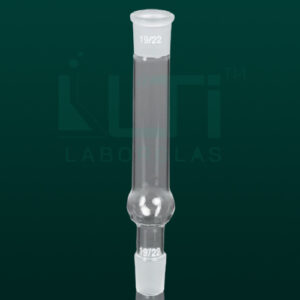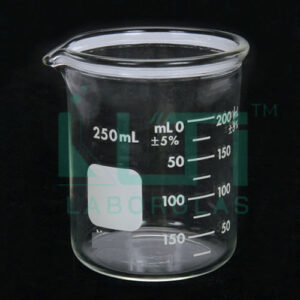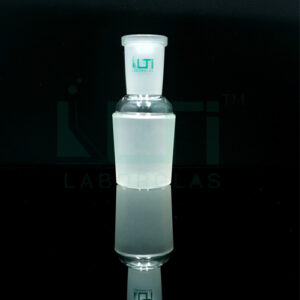Conformity to ISO 383/DIN 12249 Standards.
| Part No. | CONE Size | Approx. O.D. Of Tube | Total length (mm) | Pack (qty.) |
| 1230-10C | 10/19 | 8 | 90±5 | 12 |
| 1230-14C | 14/23 | 13 | 90±5 | 12 |
| 1230-19C | 19/26 | 16 | 90±5 | 12 |
| 1230-24C | 24/29 | 22 | 110±10 | 12 |
| 1230-29C | 29/32 | 26 | 110±10 | 12 |
| 1230-34C | 34/35 | 30 | 120±10 | 12 |
Here are some potential uses for a double cone joint in a laboratory setting:
- Glassware Assembly: Double cone joints are commonly used for assembling various glass components in laboratory setups. They provide a secure and interchangeable connection, allowing researchers to design and modify glassware configurations for specific experiments.
- Reaction Vessel Assembly: In chemical synthesis or reaction setups, double cone joints can be used to connect reaction vessels, condensers, and other glassware components. The interchangeability of the joints allows for flexibility in designing custom reaction systems.
- Distillation Setups: Double cone joints are employed in distillation setups where components such as distillation columns, condensers, and receiving flasks need to be securely connected. The interchangeability of the joints allows for flexibility in configuring distillation systems.
- Vacuum Systems: In vacuum applications, double cone joints may be used to assemble vacuum systems. This is common in setups such as vacuum filtration, where a reliable and airtight seal is necessary.
- Fractionation Columns: Double cone joints can be used to assemble fractionation columns for separating components in a mixture. The ability to connect different sections of the column allows for customization based on specific separation requirements.
- Research and Development: Laboratories involved in research and development activities may use double cone joints for prototyping and testing new equipment or setups. The interchangeability of these joints facilitates experimentation and modification of configurations.
- Educational Demonstrations: In educational laboratories, double cone joints can be used for teaching purposes. They allow students to assemble and disassemble glassware setups for various experiments and demonstrations, providing a hands-on learning experience.
- Analytical Instrumentation: Some laboratory instruments and analytical setups may use double cone joints for connecting different components, ensuring precision and reliability in analytical techniques.
- Fluid Transfer Setups: Double cone joints can be used in setups involving fluid transfer, such as connecting tubing between different vessels or apparatus. This is applicable in situations where controlled fluid flow is required.
- Custom Apparatus: Double cone joints are versatile and can be employed in the assembly of custom apparatus for various scientific experiments and processes. Researchers can adapt them to suit specific experimental needs.





